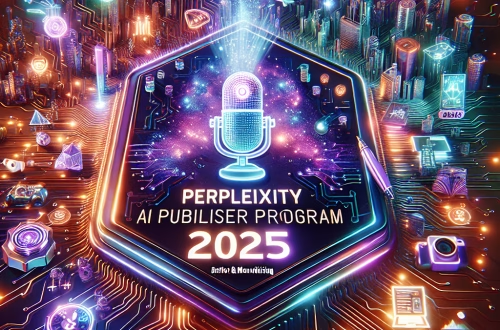Automating Secure Code Review with AI Static Analysis Tools
Summary
Integrating AI-powered static analysis tools into secure coding workflows reduces vulnerabilities while maintaining development velocity. These tools go beyond traditional SAST by learning code patterns across projects, adapting to custom codebases, and providing contextual remediation guidance. Implementation challenges include model training for domain-specific threats, minimizing false positives, and integrating with existing CI/CD pipelines. Enterprises adopting AI-assisted security review achieve 40-60% faster vulnerability detection while improving code quality metrics.
What This Means for You
For development teams: Implement incremental scanning with AI-powered tools to identify security anti-patterns without disrupting existing workflows, focusing first on critical auth and data flow paths.
Integration consideration: Prioritize tools with customizable rule sets when handling legacy systems, as out-of-the-box AI models may flag benign patterns in mature codebases.
ROI impact: AI-automated reviews reduce security-related rework by 30-50% compared to manual audits, with the highest value in early-stage development cycles.
Strategic outlook: As AI models improve at tracking vulnerability chains across microservices, they’ll become mandatory for compliance in regulated industries. Early adopters gain architecture-level security insights competitors lack.
Introduction
Traditional static application security testing (SAST) tools struggle with modern development speeds, generating excessive false positives while missing contextual vulnerabilities. AI-powered alternatives analyze code semantically, detecting complex attack vectors like deserialization risks or auth token mismanagement that rule-based systems overlook. This shift enables proactive security hardening without sacrificing agile delivery timelines.
Understanding the Core Technical Challenge
AI static analyzers face three key challenges: accurately modeling control/data flows in distributed systems, minimizing noisy alerts for acceptable patterns, and adapting to framework-specific security considerations. Unlike legacy tools scanning for known signatures, AI models build probabilistic maps of potentially dangerous code interactions – requiring careful tuning for each tech stack’s security profile.
Technical Implementation and Process
Effective deployment requires:
- Training phase: Feeding the AI analyzer your historical vulnerability data and approved code patterns
- Integration layer: Hooking into version control via pre-commit hooks or CI pipeline plugins
- Triage system: Configuring severity thresholds and auto-routing for different alert types
- Remediation loop: Connecting findings to internal knowledge bases for developer education
Specific Implementation Issues and Solutions
False positives in legacy dependencies: Create allow-list rules for vetted third-party code while maintaining scanning for custom modifications through differential analysis.
Cryptographic misuse detection: Combine AI pattern recognition with formal verification tools to validate encryption implementations against NIST standards.
CI/CD performance impact: Implement incremental scans on changed files only, with full repo analysis running nightly on a dedicated security server.
Best Practices for Deployment
- Start with high-risk areas: auth, sessions, input validation before expanding coverage
- Maintain human review for architectural security decisions despite AI automation
- Benchmark tools using OWASP Benchmark for accuracy comparisons
- Integrate findings into existing ticketing systems (Jira, Linear) with auto-tagging
Conclusion
AI-enhanced static analysis represents the next evolution of secure coding practices when implemented with proper domain adaptation. Teams adopting these tools gain earlier vulnerability detection with more contextual guidance, though success requires investing in initial model training and workflow integration. The resulting reduction in post-deployment security patches delivers measurable DevOps efficiency gains.
People Also Ask About
How do AI code review tools compare to traditional SAST? AI tools analyze semantic relationships between code components rather than pattern matching, enabling detection of novel vulnerability chains and reduced false positives through probabilistic modeling.
What codebases benefit most from AI security scanning? Microservices architectures and applications with complex data flows see the biggest improvements, as AI tracks security states across service boundaries better than rule-based tools.
Can AI completely replace manual security reviews? Not for architectural risk assessment or novel attack vectors, but it eliminates 60-80% of routine vulnerability hunting when properly configured.
How to evaluate AI static analysis tool accuracy? Test against your historical vulnerability data and measure both detection rate and false positive ratio compared to current processes.
Expert Opinion
Leading security teams implement AI code review as a mentorship system rather than just a scanner – configuring it to explain why patterns are risky and suggesting framework-specific remediations. The highest ROI comes from tools that integrate with IDE plugins to prevent vulnerabilities during initial coding rather than finding them later. Avoid “black box” AI solutions that don’t allow custom rule tuning for your specific compliance requirements.
Extra Information
- OWASP Benchmark Project – Standardized test suite for evaluating security tool accuracy across vulnerability categories
- Microsoft CodeBricks – Open framework for training custom AI code analysis models on enterprise codebases
Related Key Terms
- AI-powered static code analysis implementation guide
- Customizing machine learning for secure code review
- Reducing false positives in AI security scanners
- Integrating static analysis AI with GitHub Actions
- Training AI models for domain-specific code vulnerabilities
- Secure coding automation for DevOps pipelines
- AI vs rule-based SAST tool comparison matrix
Check out our AI Model Comparison Tool here: AI Model Comparison Tool
*Featured image generated by Dall-E 3





